Deadliest Plants On Earth
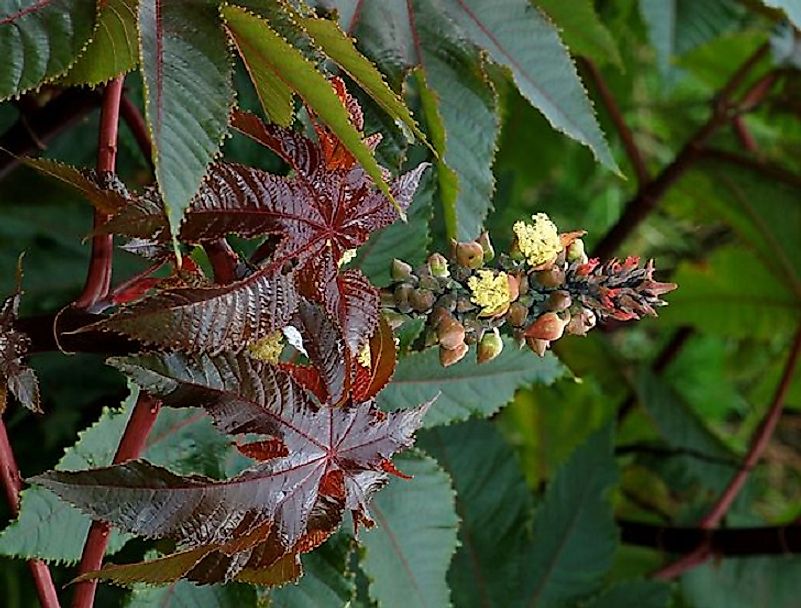
5. Castor Oil Plant
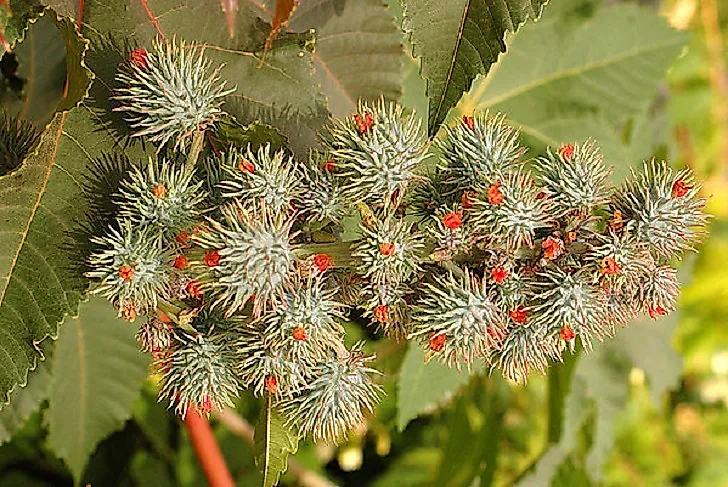
The castor oil plant (Ricinus communis) is a highly toxic plant producing the potent toxin ricin which is a powerful cytotoxic agent. Another toxin, the Ricinus communis agglutinin, a hemagglutinin, is also produced by the plant. The plant grows widely in the tropical regions of the world and is used for the extraction of castor oil from the seeds of the castor oil plant. Castor oil is used for the manufacture of soaps, lubricants, pharmaceuticals, perfumes and many other products. The ricin toxin obtained from the seeds of this plant is water soluble in nature and potent enough to kill an adult human at a mere dose of just 1 milligram. Nausea, bloody diarrhea, blood pressure drops, and intense abdominal pain are some of the symptoms of ricin poisoning which in high doses will trigger death. According to the Guinness Book of World Records, 2007, the castor plant is the most poisonous plant in the world.
4. Rosary Pea
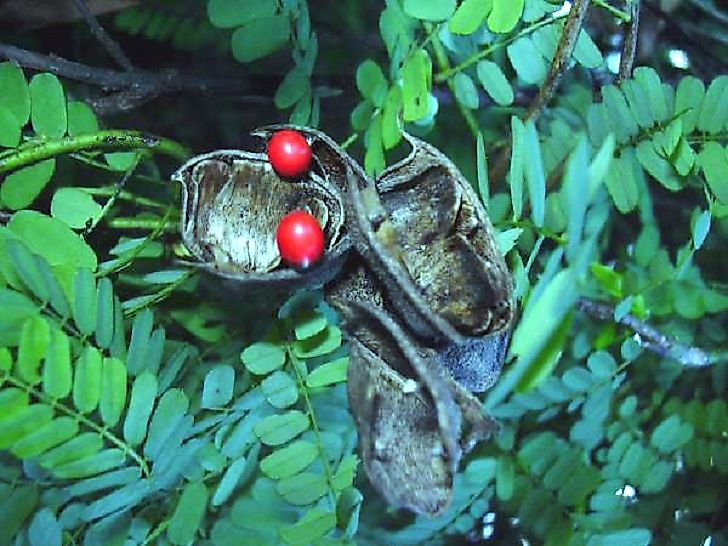
The Rosary pea (Abrus precatorius) is a native plant of India from where it has been distributed to other tropical and subtropical areas of the world. The seeds of the rosary pea are utilized in the manufacture of beads for percussion instruments. The plant is also known for the highly cytotoxic nature of its poison abrin produced within its seeds which inhibits the synthesis of proteins within the cell. It is estimated that even the consumption of a single seed of this plant is sufficient to kill an adult human being. The symptoms of rosary pea poisoning include nausea, vomiting, liver failure, convulsion and finally death. Unlike the quick action of ricin on the body, abrin, though more toxic at lower doses than ricin, is absorbed at a much slower rate, with symptoms manifesting at a much later stage, allowing time for treatment.
3. Manchineel Tree
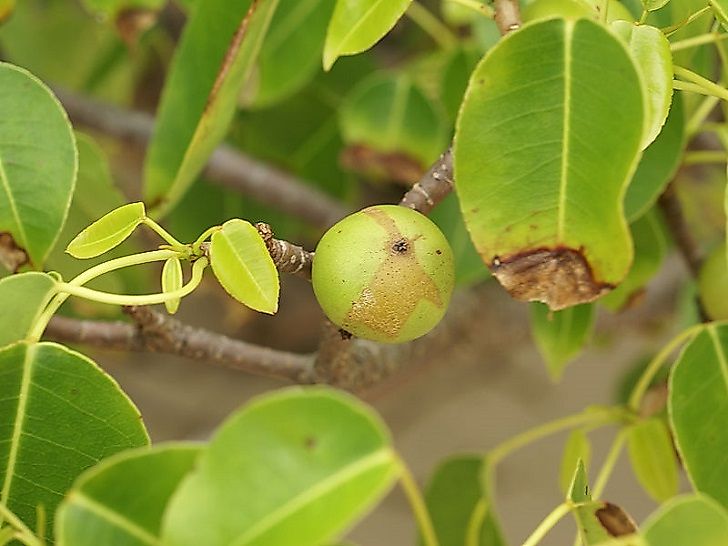
Almost all parts of the Manchineel tree is considered to be deadly. In the ancient world, the Carib Indians are known to have created poison arrows using the sap from these trees while they also tied their captive enemies to the trees where the victims would die a slow death. The manchineel tree’s sap contains toxic phorbol which is responsible for causing painful blisters on the skin. It is also claimed that those who seek shade under the tree during the rain receives multiple blisters as the rainwater washing down the toxic sap touches their skin. The fumes generated from burning these trees causes significant irritation to the eyes, often damaging the epithelium of the cornea. Ingestion of the seeds of this tree can also be fatal.
2. Giant Hogweed
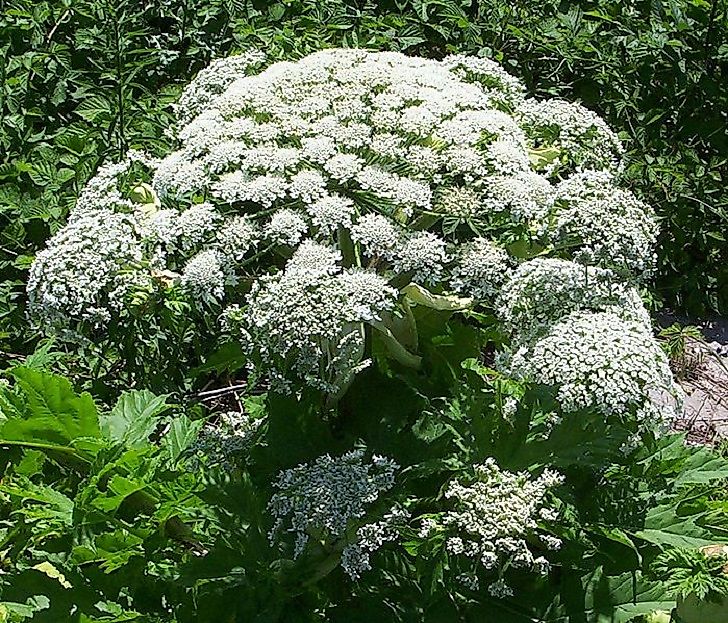
The Giant Hogweed, or the Heracleum mantegazzianum, is a plant that was native to Central Asia but now grows in certain parts of Europe and North America. The sap of the plant is highly dangerous and a few drops in the eye can result in complete blindness while on the skin, the sap causes phytophotodermatitis, an extensive blistering of the skin, often necessitating hospitalization of the victim. Furocoumarin is a chemical secreted by the plant that is held responsible for its toxicological properties. The chemical is found to interact with the genetic material, DNA of cells, inactivating the cell completely. People handling giant hogweed are advised to take significant precautions to avoid being poisoned.
1. Monkshood
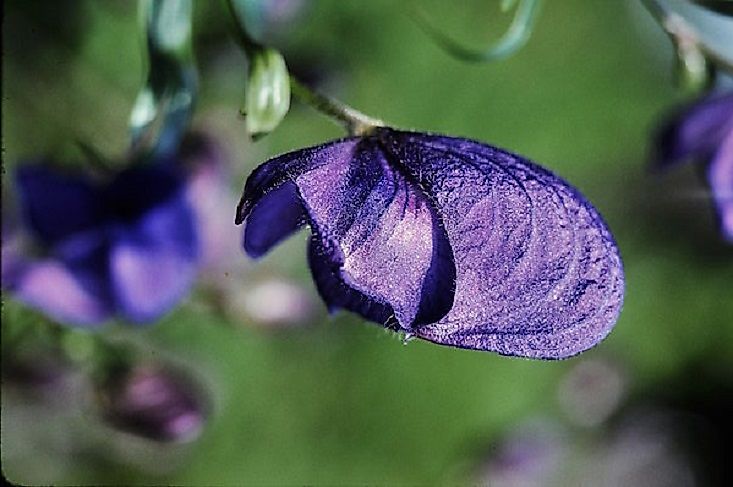
Monkshood, or Aconitum, is a genus of over 250 species of plants, most of them possessing poisonous properties. Monkshood has a wide distribution in the mountainous areas of the northern hemisphere. The toxins obtained from some species of aconitum are so potent that Alaskan tribes have been known to hunt an entire whale with a single poison arrow of Aconitum poison. The Aconitum poisons have also been used in the past in biological warfare. The toxin once ingested in fatal doses can kill an adult human being in only a few hours. Nausea, stomach burning, diarrhea, numbness, and motor weakness are the initial symptoms while death occurs due to cardiac or respiratory failure. Several cases of homicide in the past have also been linked to poisons from this past. One of the most famous was the murder of Lakhvinder Cheema in Britan by his partner Lakhvir Kaur Singh, a woman who wanted to seek revenge from Cheema who had left her for another younger woman. She went all the way to India to procure poison from an Indian Aconitum species and added it to a curry eaten by Cheema which killed him instantaneously. Singh was tried for murder and convicted and her case became famous as the “Curry Killer” case in Britain.











